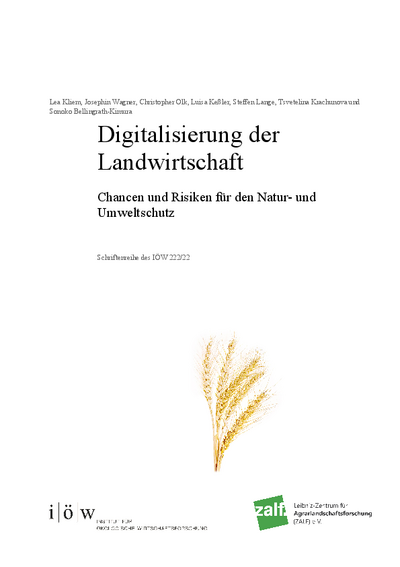Digitalization of agriculture Opportunities and risks for nature conservation and environmental protection
Increasing ecological challenges, such as the rapid loss of biodiversity or climate change, present farms with the challenging task of reconciling species and animal protection, soil conservation and climate protection measures with yield stability and the production of high-quality food. The digitalization of the agricultural sector is often seen to play a key role in effectively meeting these challenges. However, empirical evidence of this is so far scarce.
For the environment, this offers both opportunities and risks: On the one hand, the technologies can help to reduce energy and water consumption, fertilizers, chemical use and greenhouse gas emissions and protect biodiversity. Also, the use of data for this purpose could be expanded to promote biodiversity. On the other hand, digital technologies can contribute to further intensify agricultural systems, thus hamper a sustainability-oriented transformation of agriculture. Production and application of digital technologies require energy and materials. Higher efficiency can lead to rebound effects, which would counteract savings.
The publication outlines these effects and concludes that the preservation of biodiversity and ecosystems is currently not a primary goal of the digitization of agriculture, but merely a possible side effect. Moreover, digitalization in turn gives rise to new, different challenges and risks. Technological solutions should therefore be seen as tools that can help to spread biodiversity-enhancing approaches. However, they do little to fundamentally transform industrialized agricultural systems and may even inhibit a larger agroecological transformation.



